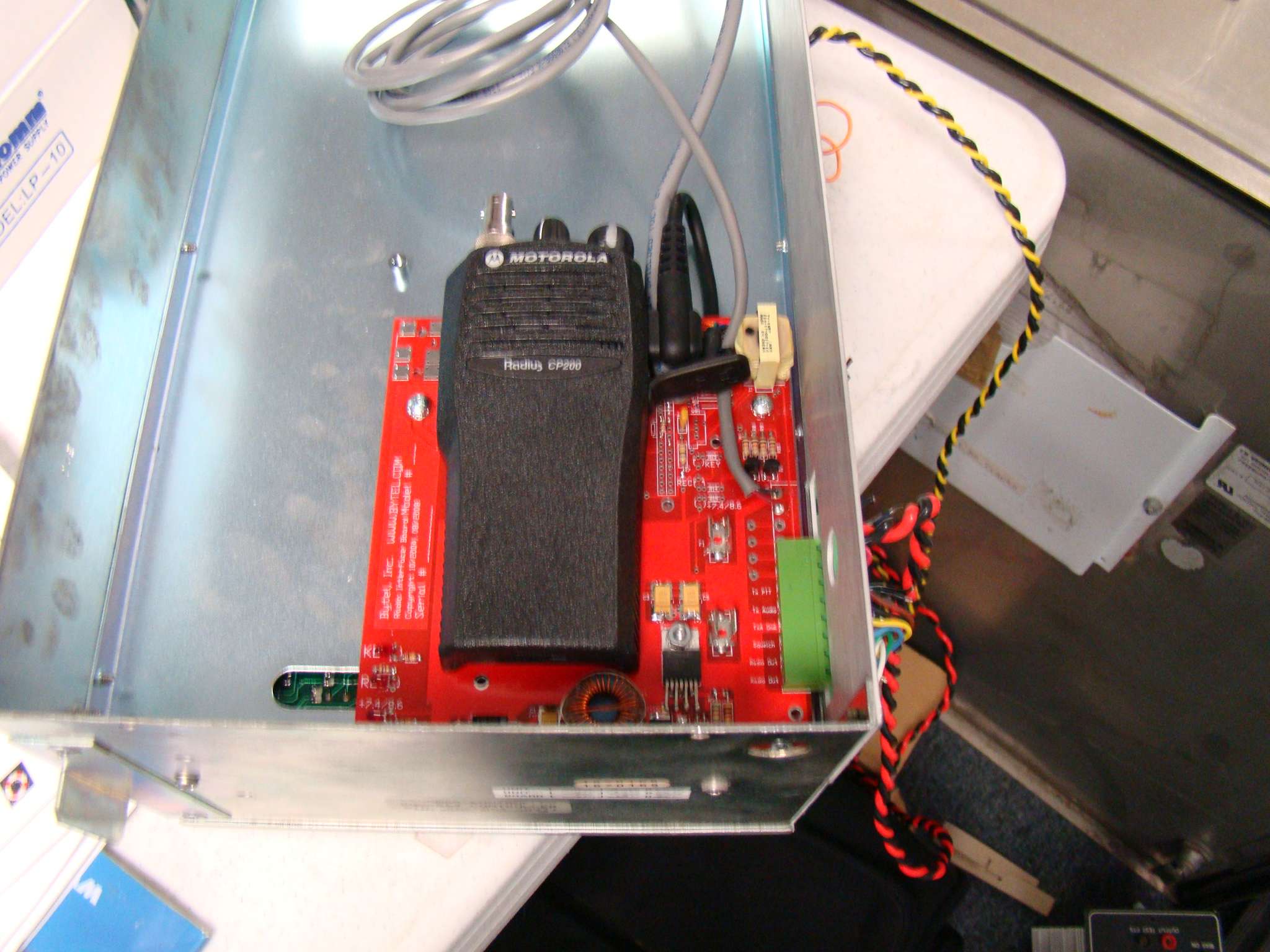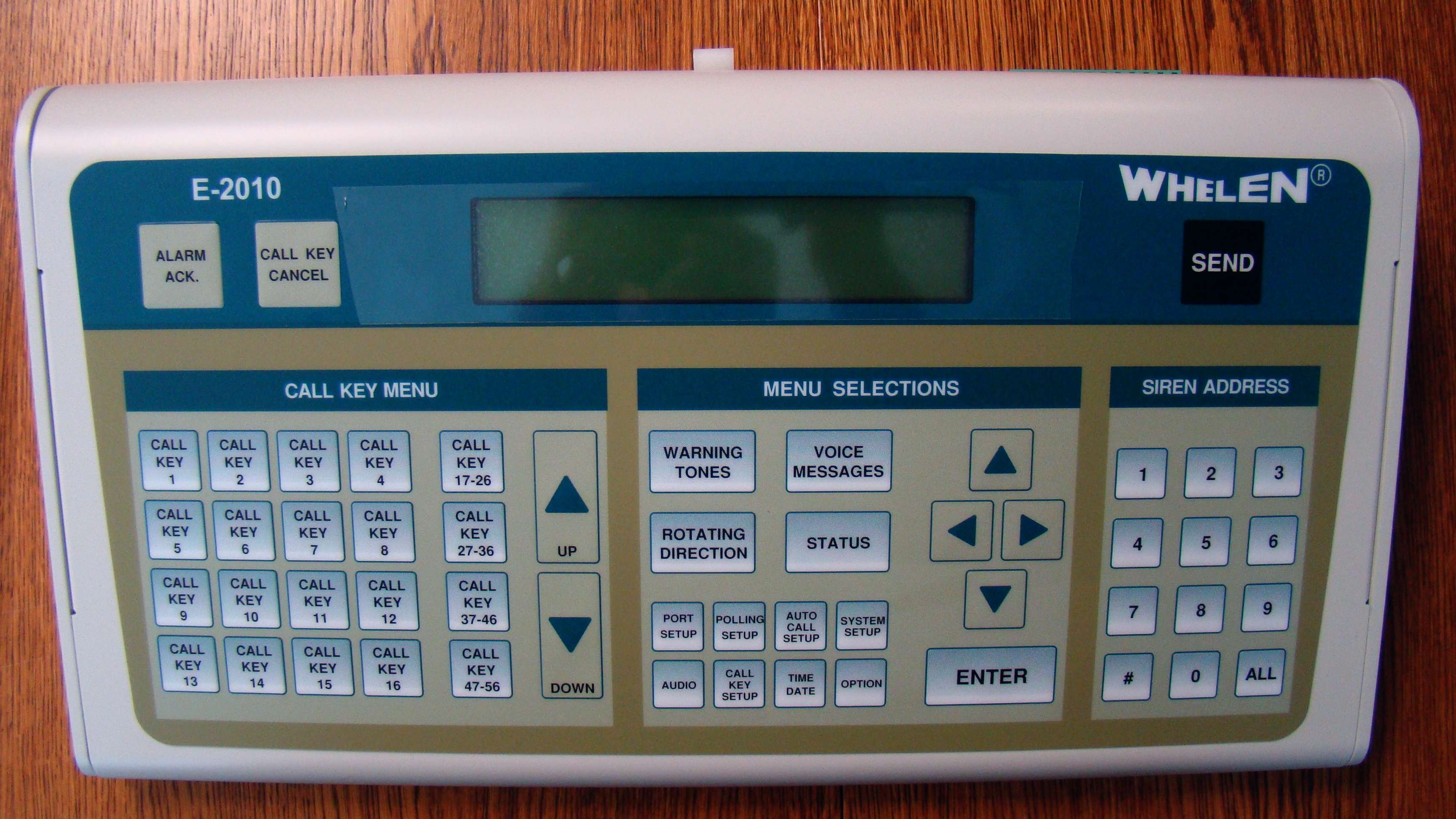

Bytelsystems produces a wide range of outdoor warning interfaces for Whelen sirens; from a simple radio interface that can be substituted for the Whelen/Ritron radio package at the time of original siren purchase, to a complex mix of radio, dual radio, wireline and [VOIP] Voice Over Internet Protocol.
Bytelsystems works with Whelen dealers and local radio dealers to provide equipment that addresses the end customer's specific needs.
Below is the Bytelsystems Siren Interface Board BWEN.


Bytelsystems BWEN Interface for the current Whelen siren and older ESC864 housing.
The Bytelsystems Interface (BWEN) can accept a wide range of Motorola radios, each slides onto the interface in the same manner as the radio slides onto a battery. For customers with both modern E-20X0 and older ESC864 controllers, Bytelsystems offers the BWEN with connections for both controllers. In that way, a single spare BWEN can go anywhere in the siren system.
Input voltage 17 to 35 VDC.
Typical current drain with radio in receive 39ma.
Typical current drain with radio in transmit 500ma. (Max. 2 second burst)
Voltage to radio 8.0 VDC from a step-down switching regulator.
BWEN supports controller squelch gate hold off of outbound.
BWEN footprint fits standard Whelen attachment points.
The radio's levels are left at standard Motorola settings.
BWEN siren side levels are set to Whelen standards.
Operating temperature range -30 to +170 F
MRB Multi Radio Board
Below is the Bytelsystems MRB Board interfaced with a BWEN.

Here the MRB is shown to the right of a BWEN.
The MRB is an optional audio routing and power board used both at the activation point(s) and in the sirens. This board was developed to provide additional ways messages can be routed through a siren system. It has provisions for any combination of radio(s), wireline, VOIP and control console.
In the picture above the MRB is used to provide a simple 4 wire interface. This customer wanted to install the siren (in this case a Whelen IPS) deep in a high-rise but the radio signal from the distant repeater was too low for reliable communications.
The housing above was installed in the elevator equipment room atop the building and CAT-5 cable with RJ-45 connectors linked the siren and radio package.
Another example would be a city with an outdoor warning system. The city also had a college campus, the collage wanted the ability to warn the student body of city-wide emergencies and campus specific problems. In other words, they wanted the city's weather warning to reach their students directly without needing to be relayed by the campus police. The college also wanted priority control of their sirens and even the ability to lock out the city-wide system if it became necessary. This is where the MRB comes in with a radio interface for the city-wide activation and wireline control with lockout ability for the campus police office.
Input voltage 17 to 35 VDC.
Typical current drain depends on configuration ranging from 5 to 500ma.
Step down switching regulator output is mission specific. (8 to 18VDC)
MRB supports controller squelch gate hold off of outbound messages.
MRB footprint fits standard Whelen attachment points.
MRB can be stacked with the BWEN (radio board(s)
Radio Levels are left at standard Motorola settings.
MRB siren side levels are set to Whelen standards.
MRB wireline levels site specific. (-20 to +10dBm @ 600 ohms)
Wireline operations can be daisy chained through several MRBs.
Operating temperature range -30 to +170 F.
Wireless Push Button Box
Whelen makes a superb siren activation unit called a E-2010. It has direct command entry, and Call Keys,
but the feature we are interest here is its remote entry capability.
 The E-2010 can be activated by any of four closures. The controller the runs a pre-programmed sequence of commands, and that's where the Wireless Push Button box comes in. The WPBB can be mapped to activate these remote inputs.
The E-2010 can be activated by any of four closures. The controller the runs a pre-programmed sequence of commands, and that's where the Wireless Push Button box comes in. The WPBB can be mapped to activate these remote inputs.
A WPBB can have one or two push buttons. When pushed the WPBB fires up its microprocessor and a predefined message unique to that push button is sent by WPBB to the E02010's remote input and the siren system is activated. The message is also captured so the button that set the system off is known.
Below is the Bytelsystems Push Button Box. (WPBB)



Above is the wireless receiver and display panel.
Battery change out interval is 10 years
One button WPBB has one function
Two button WPBB has three functions
The WPBB can be cased to fit customer requirements
Antennas can be internal, external or extended
The WPBB can be housed in a variety of cases.
Unique push button identity is programmed into WPBB's eeprom.
Wireless receiver has 3 open collector outputs.
Wireless receiver has 4800 baud serial output for display customers DCS.
WPBB operating temperature range -20 to +145 F.